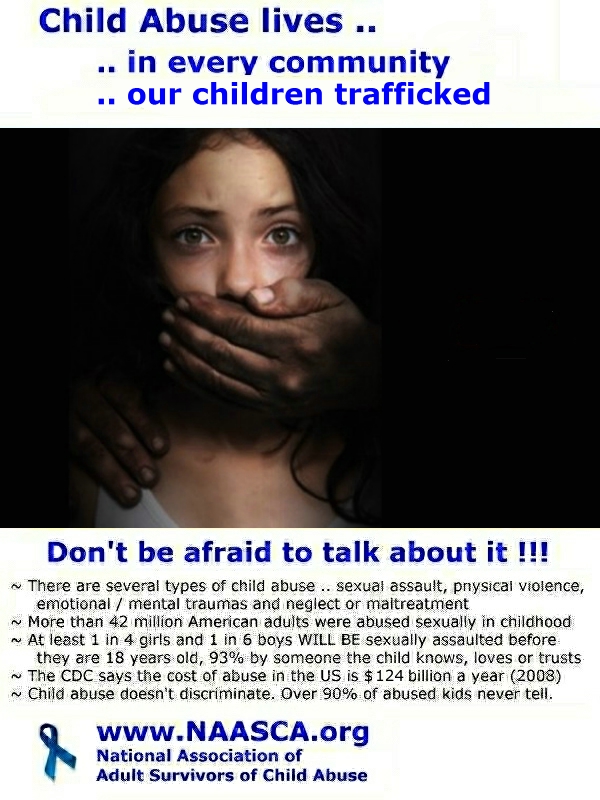 |
|
Child Abuse lives ..
...... in every community
...... our children trafficked
Human trafficking victims have been identified in cities, suburbs, and rural areas in all 50 states and in Washington, D.C. Recent estimates suggest human trafficking is a $32 billion a year enterprise worldwide, second only to drug smuggling. The Center for Missing and Exploited Children estimates some 100,000 victims a year are turned out as child prostitutes, and the average age for these kids is 13 years old. They are forced to provide commercial sex against their will.
Some victims are hidden behind locked doors in brothels. In other cases, victims are in plain view and may interact with community members, but the widespread lack of awareness and understanding of trafficking leads to low levels of victim identification by the people who most often encounter them. For example, women and girls in sex trafficking situations, especially U.S. citizens, are often misidentified as "willing" participants in the sex trade who make a free choice each day to be there.
While anyone can become a victim of trafficking, certain populations are especially vulnerable. These may include runaway and homeless youth, victims of previous trauma and abuse and individuals fleeing family conflict.
Runaways and at-risk youth are targeted by pimps and traffickers for exploitation in the commercial sex industry or different labor or services industries. Pimps and sex traffickers are skilled at manipulating child victims and maintaining control through a combination of deception, lies, feigned affection, threats, and violence.
The needs of survivors of trafficking are among the most complex of crime victims, often requiring a multidisciplinary approach to address severe trauma recovery and medical needs, immigration and other legal issues, safety concerns, shelter and other basic daily needs, and financial hardship.
For more information about the services available to victims of human trafficking, including comprehensive service referrals in the U.S. we suggest you go to the Polaris Project.
Please see:
www.PolarisProject.org/resources/referrals |
